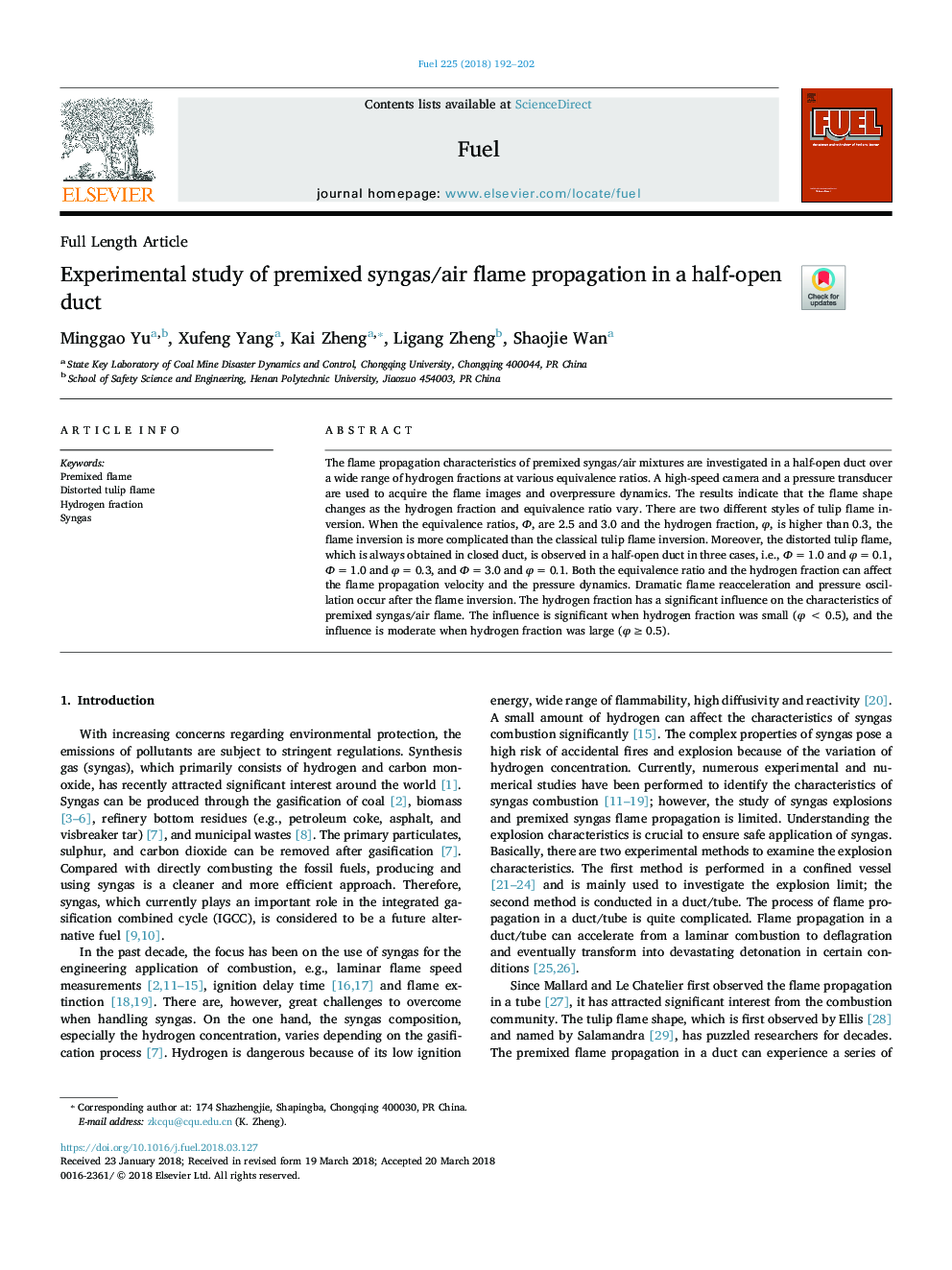| Article ID | Journal | Published Year | Pages | File Type |
|---|---|---|---|---|
| 6630996 | Fuel | 2018 | 11 Pages |
Abstract
The flame propagation characteristics of premixed syngas/air mixtures are investigated in a half-open duct over a wide range of hydrogen fractions at various equivalence ratios. A high-speed camera and a pressure transducer are used to acquire the flame images and overpressure dynamics. The results indicate that the flame shape changes as the hydrogen fraction and equivalence ratio vary. There are two different styles of tulip flame inversion. When the equivalence ratios, Ф, are 2.5 and 3.0 and the hydrogen fraction, Ï, is higher than 0.3, the flame inversion is more complicated than the classical tulip flame inversion. Moreover, the distorted tulip flame, which is always obtained in closed duct, is observed in a half-open duct in three cases, i.e., Фâ¯=â¯1.0 and Ïâ¯=â¯0.1, Фâ¯=â¯1.0 and Ïâ¯=â¯0.3, and Фâ¯=â¯3.0 and Ïâ¯=â¯0.1. Both the equivalence ratio and the hydrogen fraction can affect the flame propagation velocity and the pressure dynamics. Dramatic flame reacceleration and pressure oscillation occur after the flame inversion. The hydrogen fraction has a significant influence on the characteristics of premixed syngas/air flame. The influence is significant when hydrogen fraction was small (Ïâ¯<â¯0.5), and the influence is moderate when hydrogen fraction was large (Ïâ¯â¥â¯0.5).
Related Topics
Physical Sciences and Engineering
Chemical Engineering
Chemical Engineering (General)
Authors
Minggao Yu, Xufeng Yang, Kai Zheng, Ligang Zheng, Shaojie Wan,
